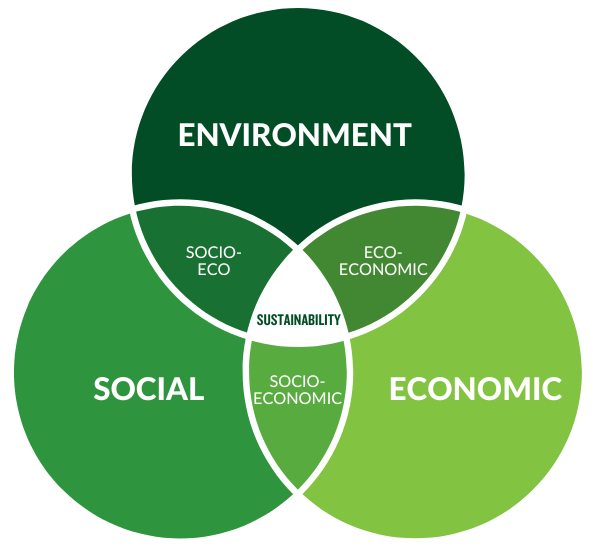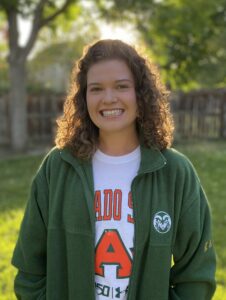What is Sustainability?
Sustainability has been a talking point in recent years with a number of organizations creating sustainability plans and hiring personnel dedicated to running those organizations in a sustainable way. But even with extensive discussions about sustainability in the world today, it can still be a difficult concept to define. A quick Google search will tell you that sustainability is “the ability to be maintained at a certain rate or level”. While this definition is easily applied to a number of topics, it is still unclear how something is maintained. Over the past few decades, sustainability research and literature has landed us at a general conceptual understanding of sustainability: the balancing of the environment, economy, and society. These can be thought of as the three pillars of sustainability. When considering sustainability, it is important to have an understanding of each of these three pillars, their intersections, and how this impacts areas where sustainability is needed such as animal agriculture.
Defining the Three Pillars:
The environment is typically top of mind when thinking about sustainability – and rightfully so. The environment has direct impacts on nearly everything we do in our day-to-day lives. So maintaining the environment through natural resource management, pollution prevention, and biodiversity management is important for sustainability.
In addition, the economic-side of sustainability is also important to take into account. How can we make sure that people’s livelihoods are maintained and businesses continue to see profit?
Finally, one aspect of sustainability that might not be as prominent is social sustainability. This is making sure that societies and communities are not negatively impacted by changes. This means that access to resources and the well-being of the community is taken into account and maintained.
In order for sustainability to be viable in a system, the environment, economics, and society must be balanced. Without balance, one area might outweigh others making the system unsustainable.

Intersections:
While the three pillars are important areas to consider when thinking about sustainability, it is also important to where they overlap. This can help to further one’s understanding of what sustainability is.
Socio-Eco is the intersection of society and the environment. This can be thought of as how the community interacts with their environment. This intersection highlights the importance of environmental justice, natural resource stewardship, and environmental health and safety.
Eco-Economic is the intersection of the environment and economics. This can be thought of as how the environment can influence economics. For example, some concepts in this intersection are the economic incentives or subsidies for environmental stewardship or markets for ecosystem services.
Socio-Economic is the intersection of society and economics. This can be thought of as how our economic position impacts society and vice versa. This intersection is where topics such as workers’ wages and rights exist. Additionally, this intersection is where corporate social responsibility (CSR) falls.

Sustainability in Animal Agriculture:
At AgNext, we are committed to finding sustainable solutions for animal agriculture. This means that in our research, we are taking into account the environment, economics, and society. This directly aligns with our mission of identifying and scaling innovation that fosters the health of animals and ecosystems to promote profitable industries that support vibrant communities.
By finding sustainable solutions for animal agriculture, our vision is to make animal agriculture a sustainable component of our global food system. This means that producers will see profits, communities will have access to nutrient-dense foods, and the impacts on the environment will be minimized.
Interested in learning more about sustainability as it relates to animal agriculture? Read this blog post.
Reference:
Kebreab, E. 2013. Sustainable Animal Agriculture. CABI.

Erica Giesenhagen
Communication and Administrative Coordinator
